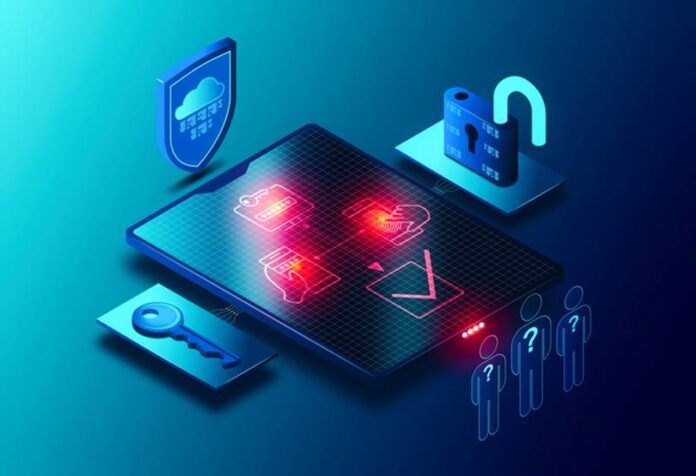The number of enterprises turning their workplaces to remote is on the rise, and so is the interest of attackers. With all sorts of information available over the internet, hackers are always looking for security loopholes in the cloud infrastructures to gain access to sensitive corporate data or employee personally identifiable information.
To keep your enterprise secure from all types of internal and external threats, you should consider a cybersecurity solution to secure your remote workforce. If you take these threats lightly or delay the Zero Trust implementation, your data will be vulnerable to cyberattacks.
What is Zero Trust?
You should consider Zero Trust as a security framework that labels every user on the network as hostile. It uses a security scheme to filter users on a high alert network. The framework follows the never trust protocol and verifies the users to protect your cloud infrastructure through continuous authorization and authentication based on their rights, location, or device.
A Zero Trust solution will limit resource access and convert the network into segments to reduce the exploitable security loopholes. However, to successfully implement a Zero Trust framework, you need to prioritize your network security by allocating significant resources to cover your cloud infrastructure.
Core principles of a Zero Trust model
Here is the set of principles the Zero Trust model uses to keep your cloud protected from threats:
- Access is granted with minimum privileges
Users have the least access to the resources required to carry out their daily tasks; this reduces their exposure to the sensitive data stored on your enterprise’s cloud network. - Users are immediately identified
With a Zero Trust Model in place, the IT team can quickly identify them on the network or while using different applications and data. They are continuously authenticated and authorized to maintain the level of security. - The network is converted into segments
The security perimeter is converted into smaller segments with different access permissions for other network parts. This segmentation makes monitoring and managing data accessible while eliminating excess rights assigned to users.
The stringent policies adopted by the Zero Trust model stop external threats and safeguard your organization from internal threats as well. Since every user is only allowed to access resources necessary for their daily routine, this ensures no one has access to all sensitive data stored on company servers. Therefore, Zero Trust can actively protect the brand reputation of your enterprise.
Reasons why you need Zero Trust
Let’s discuss the four reasons you should consider Zero Trust as the cybersecurity option for your enterprise.
Clouds need shared security responsibility
Since you will move all critical applications and work processes from in-house infrastructure to a public or hybrid cloud, the security team must reconsider the trust assumptions. Most cloud service providers follow a shared responsibility model, where the CSP handles some security policies while the enterprise handles others.
Often, enterprises handle the most integral policies to keep their cloud infrastructure secure. Therefore, you need to adopt the Zero Trust model to span the shared security responsibility as the underlying assumption of trusting anyone who accesses the cloud is no longer secure enough.
Third-Party cloud applications should not be trusted blindly
Third-party software providers now offer several SaaS and PaaS applications that can connect to the cloud easily. However, even when they own the core and business logic of the applications, these third-party software providers have little to no ownership of the additional software components used to build their applications.
Since the application developers can’t blindly trust their application, you should not do it. The Zero Trust approach declares the network as already compromised, so no unauthorized processes or applications can execute on the web without the necessary authentication to access data.
The Internet is not as secure as it seems
Accessing applications over the cloud has made the Internet insecure for remote workers. Therefore, the traditional perimeter security solutions previously employed by most businesses to protect themselves from outside threats are no longer robust.
Zero Trust employs the never trust and always verify principle to authenticate and authorize every user that logs into the enterprise’s cloud. This offers complete visibility of what’s happening in the network, and the IT team can visually see all activities. Even if an intruder uses an employee’s credentials to access your cloud, Zero trust will limit access to the privileges assigned to the user and keep them away from sensitive data.
Verifying the security status of all environments is not possible
The traditional security technologies and processes employed by enterprises before working from home became the new norm are limited to geographic locations, like a head office. Therefore, the possibility of remote employees using compromised devices through unprotected Wi-Fi connections is high.
To protect the cloud, enterprises must assume the setup used by the employees is compromised and use a Zero Trust approach to restrict their access to other corporate network segments. This ensures the security of your cloud perimeter regardless of the status of their working environment. You can also use Zero Trust to design a security policy requiring employees to use a secure VPN service to access the cloud.
Conclusion
Zero Trust is the future of cybersecurity solutions for its reactive perimeter-focused methods. Since working from home is the new norm for 2022, businesses need to be proactive in adopting Zero Trust immediately to keep their customers, partners, employees, and corporate data secure.






























































